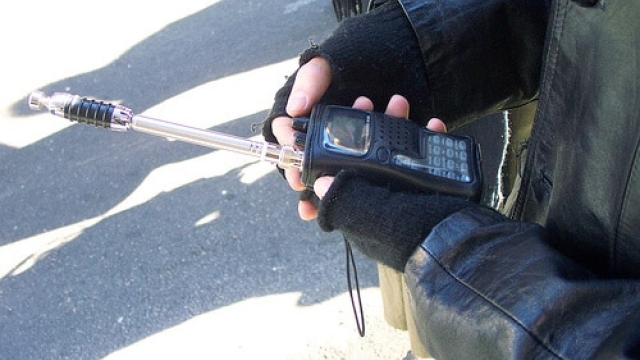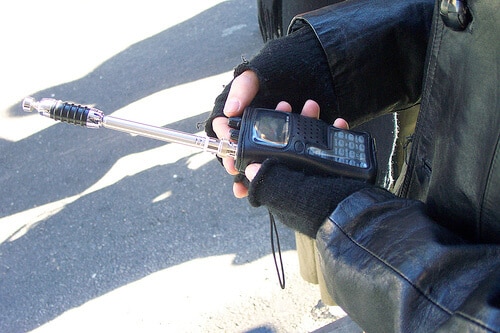
MAGA ask Trump to pass the “Police Radio Transparency Act” to stop Police Scanner Encryption “save the press”

NEW YORK, NY – The NYPD’s radio chatter, once a gritty pulse New Yorkers could tap into, has been choked off by a suffocating blanket of encryption, and a bold new bill—the “Police Radio Transparency Act”—is swinging back hard. The department’s 2023 lockdown of its P25 airwaves turned a lifeline of public insight into a fortress of silence, leaving 8 million residents cut off from the beat of their streets. As the Act claws its way through Congress, promising one unencrypted dispatch channel, it’s laying bare a truth: encryption’s a chokehold on a city that deserves to hear what’s happening.
Rewind a few years, and a scanner tuned to 476.4375 MHz could grab NYPD dispatch raw—“Units to Harlem, 10-34 assault”—a real-time feed straight from the precincts to the people. Now, that’s gone, swallowed by a Motorola P25 system locked tight at 851.0125 MHz. The air’s dead, replaced by static that mocks anyone trying to stay connected. Last week’s chaos near Grand Central—cops swarming, lights flashing—left X drowning in rumors with no dispatch to cut through. The Act’s answer? Force open a talkgroup, let “All units, disturbance at 42nd” ring out again, because silence isn’t just inconvenient—it’s a betrayal.
The NYPD’s encryption obsession has turned transparency into a relic. Where scanners once tracked a Bronx robbery unfolding—“10-31, suspect fleeing Fordham Road”—there’s nothing but a void now, a deliberate blackout on a force of 36,000. The “Police Radio Transparency Act” isn’t playing nice—it demands one channel, unencrypted, no excuses, so New Yorkers aren’t left piecing together scraps from X or shaky livestreams. “We’ve lost the thread,” a Queens deli owner fumed to XMN News. “They’re out there, but we’re blind to it.”
The toll’s stark in a city that thrives on knowing. A Midtown bomb scare last month spiraled into panic—X lit up with “shots fired” chatter—because encrypted radios left no room for a simple “Suspicious package, stand by.” Trust’s fraying fast; 48% of urbanites say policing’s too opaque, per recent polls, and the NYPD’s wall of silence only fuels the fire. The Act’s a lifeline, a chance to rip open that wall and let dispatch breathe—think “Car 5, welfare check, Lower East Side”—restoring a link encryption’s severed.
Rewiring those APX 6000s won’t be cheap—millions, maybe—but the Act tosses in federal cash to make it happen. It’s a small price for a city starved of its own story. Every encrypted talkgroup—500-plus, from “Brooklyn South” to “Manhattan Patrol”—is another lock on a door that used to swing wide. The old days proved it: dispatch aired out loud didn’t crash the world; it kept it real. Now, as Congress debates, New York’s left asking: why’s the NYPD so afraid of a little static-free truth?
“Police Radio Transparency Act”.
Be it enacted by the Senate and House of Representatives of the United States of America in Congress assembled,
SECTION 1. SHORT TITLE
This Act may be cited as the “Police Radio Transparency Act”.
SECTION 2. FINDINGS AND PURPOSE
(a) Findings—Congress finds that:
- Public safety radio systems, including those utilizing the Project 25 (P25) standard, have increasingly adopted encryption, limiting public access to law enforcement communications.
- Transparency in police activities fosters accountability, public trust, and oversight, which are essential to democratic governance.
- The widespread use of encryption has reduced real-time monitoring by citizens, journalists, and community organizations, creating a gap in public awareness of law enforcement operations.
- Balancing officer safety with public transparency is achievable through selective use of unencrypted communications for non-sensitive functions.
(b) Purpose—The purpose of this Act is to:
- Ensure that law enforcement agencies maintain at least one unencrypted radio channel for public monitoring.
- Promote accountability while preserving the ability of agencies to secure sensitive tactical communications.
SECTION 3. AMENDMENT TO TITLE 47
Title 47 of the United States Code is amended by adding the following new section after Section 333:
§ 334. Transparency in Law Enforcement Radio Communications
(a) Definitions—In this section:
- Covered Agency—The term “covered agency” means any federal, state, or local law enforcement agency that operates a public safety radio system utilizing the Project 25 (P25) standard or equivalent digital protocol.
- Unencrypted Talkgroup—The term “unencrypted talkgroup” means a radio communication channel or group identifier transmitted without encryption, accessible to the public via standard receiving equipment.
- Public Safety Radio System—The term “public safety radio system” means a wireless communication system used by law enforcement or emergency services for operational purposes.
(b) Requirement for Unencrypted Communications—
- Mandate—Not later than 180 days after the date of enactment of this Act, each covered agency shall designate and maintain at least one unencrypted talkgroup within its public safety radio system for the purpose of public monitoring.
- Scope—The unencrypted talkgroup shall be used for routine, non-sensitive communications, including but not limited to primary dispatch, public safety announcements, and general operational coordination, as determined by the agency.
- Exception—A covered agency may encrypt all communications during an active tactical operation or emergency posing an immediate threat to officer safety, provided that such encryption is temporary and ceases upon resolution of the operation or emergency.
(c) Compliance and Reporting—
- FCC Oversight—The Federal Communications Commission (FCC), in coordination with the Department of Justice, shall oversee compliance with this section.
- Annual Report—Each covered agency shall submit an annual report to the FCC detailing: (A) The frequency, talkgroup identifier, and operational purpose of the unencrypted talkgroup. (B) Instances where encryption was applied under the exception in subsection (b)(3), including duration and justification.
- Public Access—The FCC shall make these reports publicly available on its website within 30 days of receipt.
(d) Funding and Technical Assistance—
- Grants—The Attorney General shall establish a grant program to assist covered agencies in upgrading or reconfiguring radio systems to comply with this section, with priority given to agencies demonstrating financial hardship.
- Technical Standards—The National Institute of Standards and Technology (NIST) shall provide guidance on implementing unencrypted talkgroups within P25 systems, ensuring compatibility and security.
(e) Penalties for Noncompliance—
- FCC Enforcement—A covered agency that fails to comply with subsection (b) within the specified timeframe shall be subject to a fine imposed by the FCC, not to exceed $10,000 per month of noncompliance.
- Loss of Funding—Noncompliant agencies shall be ineligible for federal public safety grants until compliance is achieved.
(f) Preemption—This section shall preempt any State or local law that prohibits or restricts the use of unencrypted talkgroups as required herein.
SECTION 4. IMPLEMENTATION
(a) Effective Date—This Act shall take effect 90 days after the date of enactment. (b) Regulations—Not later than 120 days after enactment, the FCC shall promulgate regulations to carry out this Act, including procedures for reporting and enforcement.
SECTION 5. SEVERABILITY
If any provision of this Act, or the application thereof to any person or circumstance, is held invalid, the remainder of this Act, and the application of such provision to other persons or circumstances, shall not be affected thereby.
